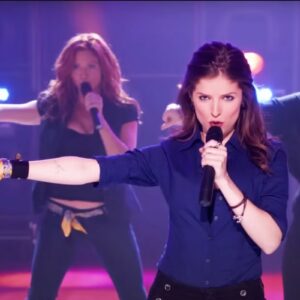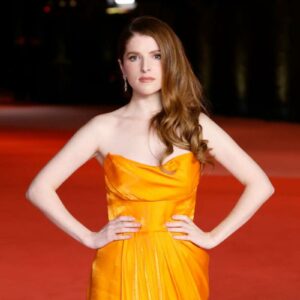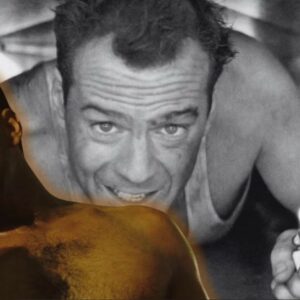The Art of Transformation: How Queen Latifah’s Roles Were Shaped by Costume and Makeup Choices
Queen Latifah has always been more than just an actress; she is a cultural icon whose influence spans across music, film, television, and beyond. With a career that defies categorization, she has consistently demonstrated her versatility, seamlessly moving from the gritty streets of “Set It Off” to the jazzy decadence of “Chicago.” But behind every unforgettable performance lies a symbiotic relationship between Latifah and the creative forces that help shape her on-screen personas—namely, the costume designers and makeup artists. These collaborators are the unsung heroes who use their craft to transform Latifah into the diverse array of characters she has portrayed throughout her illustrious career.
Costume and makeup are not mere accessories in the world of cinema; they are tools of storytelling that allow an actor to fully embody a role. For Queen Latifah, these elements have been instrumental in her ability to traverse a wide spectrum of characters, from regal queens to everyday women. This article delves into the behind-the-scenes artistry that has brought Queen Latifah’s characters to life, focusing on the critical role of costume and makeup in defining her on-screen legacy.
The Role of Costume in Character Development
Costumes in film and television serve as more than just clothing; they are a visual language that communicates who a character is, where they come from, and where they are going. For Queen Latifah, costumes have been a crucial aspect of her character development, helping to define her roles and deepen her performances. Her ability to inhabit her characters so convincingly is due, in part, to the meticulous attention to detail paid by costume designers who understand the importance of attire in storytelling.
One of the most striking examples of this can be seen in the film “Chicago,” where Latifah portrayed Matron “Mama” Morton, a role that earned her an Academy Award nomination. The character of Mama Morton is one of authority, power, and sensuality, and her costumes reflected these traits. Adorned in luxurious fabrics and bold colors, Latifah’s costumes exuded the confidence and dominance of her character. The opulence of her wardrobe contrasted with the drab, prison uniforms worn by the other characters, visually reinforcing her position of power within the prison system. Each outfit was carefully designed to reflect Mama Morton’s larger-than-life personality, making her a memorable presence in the film.
In contrast, her role as Khadijah James in the beloved sitcom “Living Single” required a completely different approach to costume design. As a successful magazine editor living in Brooklyn, Khadijah’s wardrobe needed to reflect both her professional status and her down-to-earth personality. The costumes for Khadijah were a blend of chic business attire and casual, comfortable clothing, showcasing her as a woman who was confident in her own skin and grounded in her roots. The use of vibrant colors and eclectic patterns not only mirrored the vibrant energy of the character but also resonated with the show’s predominantly Black audience, who saw themselves represented in Khadijah’s style.
In “Bessie,” the biographical film about blues legend Bessie Smith, Queen Latifah’s costumes were integral in transporting the audience back to the 1920s. The film’s costume designer, DeeDee Black, meticulously researched the era to ensure that every piece Latifah wore was authentic to the period. From the beaded flapper dresses to the elegant hats, Bessie’s wardrobe was a reflection of her journey from struggling singer to blues royalty. The evolution of her costumes throughout the film paralleled her rise to fame, with her outfits becoming more elaborate and glamorous as her career progressed. These costumes were not just historically accurate; they were essential in telling the story of Bessie Smith’s transformation and the cultural impact she had on the music industry.
Makeup as a Tool for Transformation
While costumes provide the framework for a character’s outward appearance, makeup is the finishing touch that brings that character to life. Makeup can be subtle or dramatic, but its purpose is always to enhance the actor’s performance by helping them fully embody their role. For Queen Latifah, makeup has been a powerful tool in her transformation, allowing her to disappear into her characters and convincingly portray a wide range of emotions, ages, and statuses.
The collaboration between Latifah and her makeup artists has been key to her ability to convincingly portray such a diverse array of characters. In “Chicago,” for example, the makeup choices were as bold as the costumes. Latifah’s character, Mama Morton, was given a glamorous, almost theatrical look, with dark, smoky eyes and deep red lips that emphasized her power and allure. The makeup not only enhanced her character’s persona but also tied into the overall visual style of the film, which was inspired by the glitz and glamour of the 1920s.
In contrast, Latifah’s role in “Bessie” required a more nuanced approach to makeup. The makeup team worked to subtly age Latifah over the course of the film, reflecting Bessie Smith’s journey from a young, ambitious singer to a seasoned, world-weary performer. Subtle changes in her makeup—such as the use of darker shades to create the illusion of fatigue and hardship—helped convey the toll that Bessie’s tumultuous life took on her, both physically and emotionally. These makeup choices were crucial in helping Latifah deliver a performance that was both powerful and deeply empathetic.
In the TV movie “Life Support,” where Latifah played Ana Wallace, a former crack addict turned AIDS activist, the makeup was intentionally understated to reflect the character’s struggles. The makeup team worked to create a look that was realistic and raw, using minimal makeup to highlight Latifah’s natural features while subtly emphasizing the wear and tear of her character’s difficult life. This approach allowed Latifah’s performance to shine through, as the audience was drawn into Ana’s story without the distraction of heavy makeup.
Collaboration with Designers and Artists
The process of bringing a character to life is a deeply collaborative one, involving the input and expertise of many talented individuals. For Queen Latifah, her relationships with costume designers and makeup artists have been instrumental in shaping the final look of her characters. Latifah is known for being an active participant in the creative process, offering her own insights and feedback to ensure that the costumes and makeup align with her vision for the character.
Costume designer Rita Ryack, who worked with Latifah on “Chicago,” has spoken about the collaborative nature of their relationship. Ryack has noted that Latifah brought her own ideas to the table, helping to shape the character of Mama Morton through her input on the costumes. Latifah’s understanding of her character and her willingness to engage in the creative process allowed Ryack to design costumes that were not only visually striking but also true to the essence of Mama Morton.
Makeup artist Matiki Anoff, who has worked with Latifah on several projects, including “Bessie” and “The Secret Life of Bees,” has also praised Latifah’s collaborative spirit. Anoff has shared that Latifah is deeply involved in the makeup process, offering her thoughts on how her character should look and feel. This collaboration has resulted in some of Latifah’s most memorable on-screen transformations, as the makeup has always been tailored to enhance her performance and bring her characters to life.
These collaborations are a testament to Latifah’s dedication to her craft and her understanding of the importance of costume and makeup in creating a fully realized character. By working closely with designers and artists, Latifah has been able to shape her characters in a way that is both visually compelling and true to the story being told.
Iconic Looks and Their Impact
Over the years, Queen Latifah has delivered countless performances that have left a lasting impact on audiences. Many of these performances are memorable not just for Latifah’s acting but also for the iconic looks she has sported on screen. These looks have become a part of her legacy, contributing to the cultural impact of her characters and cementing her status as a style icon in her own right.
One of Latifah’s most iconic looks is undoubtedly her portrayal of Matron Mama Morton in “Chicago.” The combination of bold costumes and glamorous makeup created a character who was as powerful as she was alluring. This look became so iconic that it earned the film’s costume designer, Colleen Atwood, an Academy Award for Best Costume Design. Latifah’s performance, coupled with her striking appearance, made Mama Morton one of the most memorable characters in the film, and her look has been celebrated as a defining moment in cinematic costume design.
Another iconic look is Latifah’s portrayal of Bessie Smith in “Bessie.” The film’s costumes and makeup were instrumental in recreating the 1920s and 1930s, and Latifah’s transformation into the legendary blues singer was nothing short of remarkable. The authenticity of her look, from the period-appropriate costumes to the carefully applied makeup, helped transport audiences back in time and brought Bessie Smith’s story to life in a way that was both historically accurate and emotionally resonant.
In “The Secret Life of Bees,” Latifah’s character, August Boatwright, is a nurturing, maternal figure, and her look reflects this. The soft, earthy tones of her costumes and the gentle makeup create a warm, comforting presence that contrasts with the harsh realities faced by the other characters in the film. This look became a visual representation of the character’s role as the emotional anchor of the story, and it left a lasting impression on audiences.
The Evolution of Her On-Screen Style
Queen Latifah’s on-screen style has evolved significantly over the course of her career, reflecting both her growth as an artist and the changing landscape of the entertainment industry. In the early years of her career, Latifah’s style was often defined by the roles she played, with her costumes and makeup reflecting the characters’ personalities and backgrounds. As she has matured as an actress, Latifah’s style has become more refined and sophisticated, with her costumes and makeup choices reflecting a deeper understanding of character development.
One recurring theme in Latifah’s on-screen style is the use of bold, statement-making looks. Whether she is playing a powerful figure like Mama Morton or a strong, independent woman like Khadijah James, Latifah’s characters are often defined by their confidence and presence. This is reflected in her costumes, which are often designed to make a strong visual impact, using bold colors, luxurious fabrics, and striking silhouettes.
Another signature element of Latifah’s style is the use of makeup to enhance her natural beauty while also conveying the character’s emotional state. Latifah’s makeup is often understated, allowing her natural features to shine through, but it is always carefully applied to reflect the character’s personality and circumstances. This subtle approach to makeup has become a hallmark of Latifah’s style, contributing to her reputation as a versatile and skilled actress.
Latifah’s style choices have also influenced trends in the entertainment industry, particularly in the way that costumes and makeup are used to define characters. Her ability to use these elements to fully inhabit her roles has inspired other actors to pay closer attention to the importance of costume and makeup in their own performances. As a result, Latifah’s influence can be seen in the work of many contemporary actors who understand the power of visual storytelling.
Conclusion
The art of transformation is a complex and collaborative process that requires the expertise of many talented individuals. For Queen Latifah, costume and makeup have been essential tools in her ability to bring her characters to life and leave a lasting impact on audiences. These elements have allowed her to fully embody her roles, whether she is playing a powerful matron, a blues legend, or a nurturing mother figure.
Latifah’s success as an actress is not only a testament to her talent but also to her understanding of the importance of costume and makeup in storytelling. By working closely with designers and artists, Latifah has been able to create some of the most memorable characters in film and television, each one defined by their unique style and presence.
As Queen Latifah continues to take on new roles and challenge herself as an artist, it is clear that her legacy will be defined not just by her performances but also by the iconic looks that have become a part of her story. The meticulous decisions made in the costume and makeup departments have contributed to her success, and they will undoubtedly continue to play a crucial role in her future endeavors.





